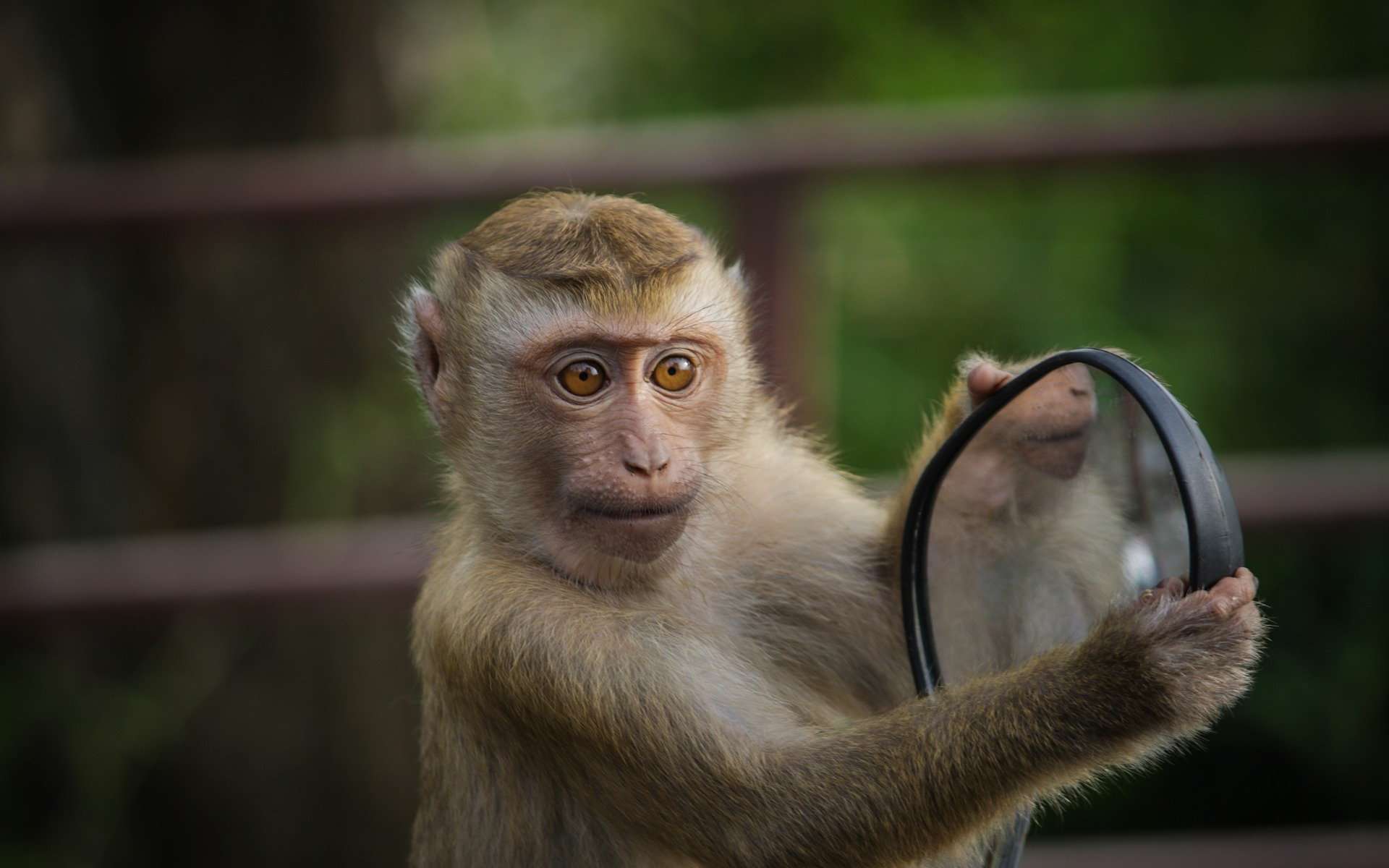A few minutes into a 2018 talk at the University of Michigan, Ian Tobasco picked up a large piece of paper and crumpled it into a seemingly disordered ball of chaos. He held it up for the audience to see, squeezed it for good measure, then spread it out again.
“I get a wild mass of folds that emerge, and that’s the puzzle,” he said. “What selects this pattern from another, more orderly pattern?”
He then held up a second large piece of paper — this one pre-folded into a famous origami pattern of parallelograms known as the Miura-ori — and pressed it flat. The force he used on each sheet of paper was about the same, he said, but the outcomes couldn’t have been more different. The Miura-ori was divided neatly into geometric regions; the crumpled ball was a mess of jagged lines.
“You get the feeling that this,” he said, pointing to the scattered arrangement of creases on the crumpled sheet, “is just a random disordered version of this.” He indicated the neat, orderly Miura-ori. “But we haven’t put our finger on whether or not that’s true.”
Making that connection would require nothing less than establishing universal mathematical rules of elastic patterns. Tobasco has been working on this for years, studying equations that describe thin elastic materials — stuff that responds to a deformation by trying to spring back to its original shape. Poke a balloon hard enough and a starburst pattern of radial wrinkles will form; remove your finger and they will smooth out again. Squeeze a crumpled ball of paper and it will expand when you release it (though it won’t completely un-crumple). Engineers and physicists have studied how these patterns emerge under certain circumstances, but to a mathematician those practical results suggest a more fundamental question: Is it possible to understand, in general, what selects one pattern rather than another?
In January 2021, Tobasco published a paper that answered that question in the affirmative — at least in the case of a smooth, curved, elastic sheet pressed into flatness (a situation that offers a clear way to explore the question). His equations predict how seemingly random wrinkles contain “orderly” domains, which have a repeating, identifiable pattern. And he co-wrote a paper, published last month, that shows a new physical theory, grounded in rigorous mathematics, that could predict patterns in realistic scenarios.
Notably, Tobasco’s work suggests that wrinkling, in its many guises, can be seen as the solution to a geometric problem. “It is a beautiful piece of mathematical analysis,” said Stefan Müller of the University of Bonn’s Hausdorff Center for Mathematics in Germany.
It elegantly lays out, for the first time, the mathematical rules — and a new understanding — behind this common phenomenon. “The role of the math here was not to prove a conjecture that physicists had already made,” said Robert Kohn, a mathematician at New York University’s Courant Institute, and Tobasco’s graduate school adviser, “but rather to provide a theory where there was previously no systematic understanding.”
Stretching Out
The goal of developing a theory of wrinkles and elastic patterns is an old one. In 1894, in a review in Nature, the mathematician George Greenhill pointed out the difference between theorists (“What are we to think?”) and the useful applications they could figure out (“What are we to do?”).
In the 19th and 20th centuries, scientists largely made progress on the latter, studying problems involving wrinkles in specific objects that are being deformed. Early examples include the problem of forging smooth, curved metal plates for seafaring ships, and trying to connect the formation of mountains to the heating of the Earth’s crust.
More recently, mathematicians and physicists have expanded the effort to connect theory and observation to a broad array of wrinkling situations, geometries and materials. “This has been going on for about the last 10 years, where we’re doing experiments first and then trying to find the theory to understand them,” said the mathematician Dominic Vella of the University of Oxford. “It’s only recently that we’ve started to have a proper understanding.”

Ian Tobasco has developed a theory that mathematically describes the kinds of wrinkles that emerge when curved surfaces are pressed flat.
Petra Lein
There have been exciting milestones. In 2015, Pedro Reis, a mechanical engineer at the Massachusetts Institute of Technology, described physical laws for the geometric patterns that form on deflated silicon balls. His work connected those wrinkles to the thickness of the inner and outer layers of the elastic material. Reis also noted that wrinkles, instead of being considered defects, might offer opportunities to design novel mechanical behaviors. Then in 2017, Vella led the analysis of the wrinkling instabilities of a thin elastic film under pressure, characterizing how the number of wrinkles changed according to the depth of the initial poke and other specific details.
But these developments still only solved pieces of the problem. For a more general mathematical understanding of how wrinkles form, a different approach was necessary. Tobasco would be the one to move it forward.
Following Curiosity
When he was younger, Tobasco thought he’d go into aerospace engineering. He graduated from the University of Michigan in 2011 with a bachelor’s degree in the field, but by that point he had already been drawn into thinking deeply about mathematical reasoning and physical systems. He earned a doctorate in math, but he blames Joey Paulsen, a physicist now at Syracuse University, for setting him on the specific path of wrinkles.
Earlier in Paulsen’s career, when he was studying the properties of unusual materials, he learned to fabricate and analyze ultra-thin polymer films using a technique called spin coating. First he’d create a special liquid material containing trace amounts of dissolved polymer; then he’d place the material on a spinning plate. Most of the liquid would evaporate, while the polymer spread to an even thickness before it solidified. Once he had his own lab at Syracuse, Paulsen learned how to adapt spin coating to create curved films — like ultra-thin turtle shells.
One day, he placed some of these curved films on top of still water and photographed how they settled on the surface. “It was purely curiosity-driven,” he said. The pictures caught Tobasco’s eye at an informal meeting with Paulsen in 2017.
“They showed that you could get these random disordered wrinkle patterns — when you did the experiment twice, you got two different patterns,” said Tobasco, who’s now an assistant professor at the University of Illinois, Chicago. “I wanted to see if I could come up with some derivable way [to predict those patterns] from elasticity, that incorporated the shape of the shell. And that the model wouldn’t change from shell to shell.”
Wrinkling patterns are configurations with the least possible energy. That is, as the thin film settles on a flat surface, it morphs until it finds the arrangement of wrinkles, disordered or not, that takes the least amount of energy to maintain. “You can organize patterns by the amount of energy that’s stored when [the pattern] manifests,” Tobasco said.
Led by that guiding principle, he isolated a few characteristics of the film that proved to be the ones that select its pattern, including a measure of its shape called its Gaussian curvature. A surface with positive Gaussian curvature bends away from itself, like the outside of a ball. Negatively curved surfaces, in contrast, are saddle-shaped, like a Pringles chip: If you go in one direction you travel up, but if you go in a different direction you go down.
Tobasco found that areas of positive Gaussian curvature produce one kind of arrangement of ordered and disordered domains, and areas with negative curvature produce other kinds. “The detailed geometry isn’t so important,” Vella said. “It really just depends on the sign of the Gaussian curvature.”
They had suspected that Gaussian curvature was important to wrinkling, but Vella said it was a surprise that the domains depended so heavily on the sign. What was more, Tobasco’s theory also applies to a broad spectrum of elastic materials, not just Paulsen’s forms. “It’s a nice geometric construction that shows where wrinkles will appear,” Vella said. “But understanding where that comes from is really deep and is kind of surprising.”
Paulsen agreed. “What Ian’s theory very beautifully does is to give you the whole pattern, all at once.”
Real-Life Wrinkles
In early 2018, Tobasco had his theory mostly settled — but even though it worked on paper, he couldn’t be sure it would be accurate in the real world. Tobasco contacted Paulsen and asked if he would be interested in collaborating. “Something just sort of worked right away,” Paulsen said. “With some of Ian’s predictions, laid on top of experimental pictures, we could see right away that they lined up.”
At that year’s Society for Industrial and Applied Mathematics Conference on Mathematical Aspects of Materials Science, Tobasco was introduced to Eleni Katifori, a physicist at the University of Pennsylvania who was exploring the problem of wrinkle patterns in confined shells and building a database of results. It was a moment of serendipity. “We could see the domains [in the simulations] that Ian’s work explained,” she said. The match was uncanny. Even during their first discussions, it was clear that Tobasco’s theory, Paulsen’s experimental images and Katifori’s simulations all described the same phenomena. “Even at the early stages, when we didn’t have anything concrete, we could see the connection.”
That early excitement quickly gave rise to skepticism. It seemed almost too good to be true. “He’s a mathematician and making all these things non-dimensional,” Paulsen said, referring to how Tobasco’s ideas about curvature could be extended far beyond two-dimensional flat materials. “Are we really looking at the same system? It agrees, but should it have agreed?”
For the next two years, the three researchers hashed out the details, showing that Tobasco’s theory really did predict — exactly — the arrangement of wrinkles that Paulsen saw in his experiments and Katifori found in her computer models. On August 25, they published a paper in Nature Physics showing how the three approaches all converge on the same, straightforward geometric arrangement of wrinkles. Notably, they found that the patterns fall into neat families of isosceles triangles that demarcated domains of order and disorder. In addition, the results aren’t confined to mathematical abstractions of impossibly thin materials but address multiple orders of magnitude of thickness.
Their work also suggests opportunities to expand the theory and its applications. Katifori said that as a physicist, she’s interested in harnessing the predictions to design new materials. “I want to understand how you can design surfaces so they actually self-organize the wrinkling patterns into something that you want.”
Another open question is how generally the theory can be applied to different kinds of curved surfaces. “It’s very focused on situations where [Gaussian curvature] is either positive or negative, but there are a lot of situations with some regions that are positive and some negative,” Vella said.
Paulsen agreed that this is an exciting possibility, and Tobasco said he is actively working in this area and consid ering other shapes of shells — such as those with holes.
But Paulsen said the theory, even as it currently stands, is beautiful and surprising. “If I give you a shell and a boundary shape and this simple set of rules that Ian’s theory predicted, then you can take a compass and ruler and basically draw the wrinkles,” he said. “It wouldn’t have had to happen that way. It could have been totally horrendous.”
Note: This article have been indexed to our site. We do not claim legitimacy, ownership or copyright of any of the content above. To see the article at original source Click Here








